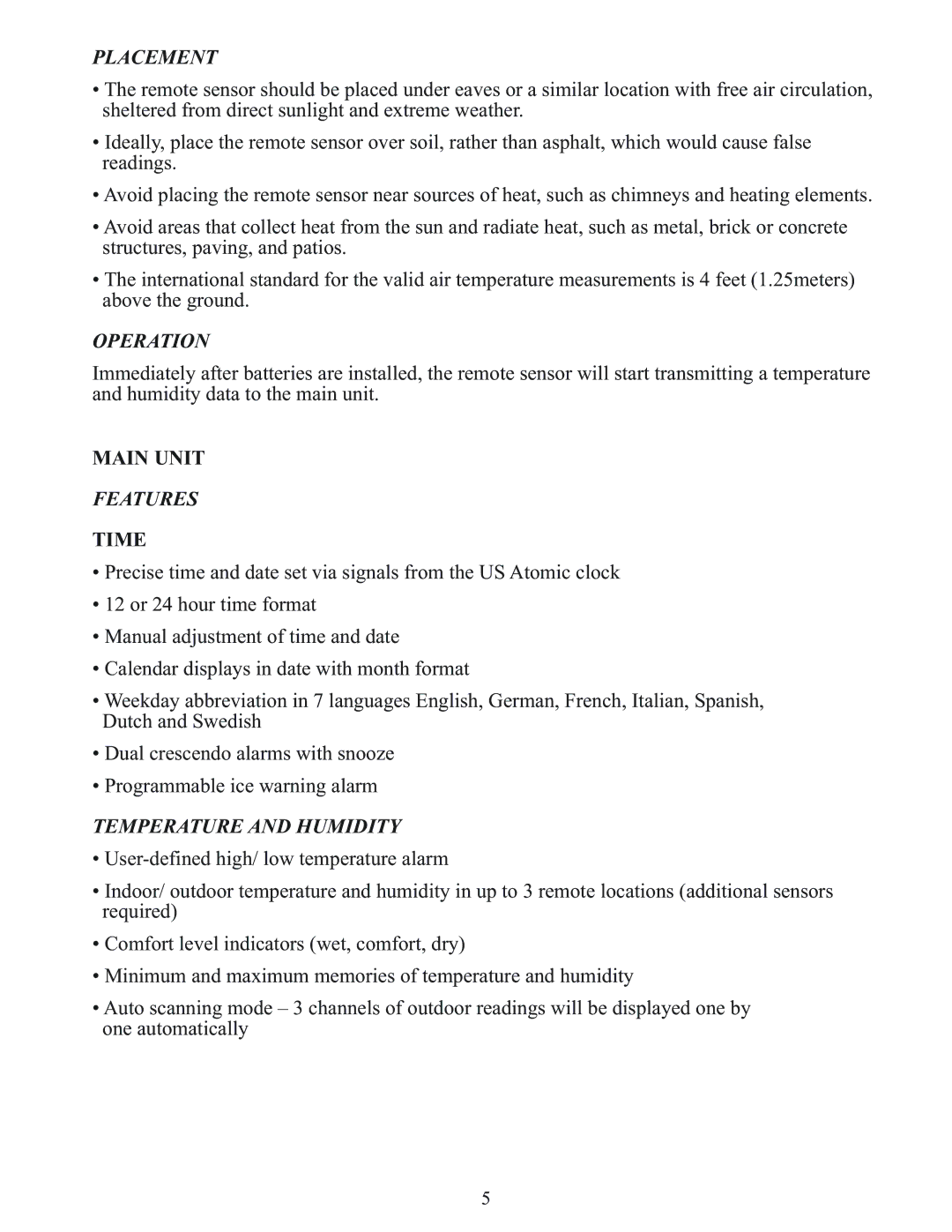PLACEMENT
•The remote sensor should be placed under eaves or a similar location with free air circulation, sheltered from direct sunlight and extreme weather.
•Ideally, place the remote sensor over soil, rather than asphalt, which would cause false readings.
•Avoid placing the remote sensor near sources of heat, such as chimneys and heating elements.
•Avoid areas that collect heat from the sun and radiate heat, such as metal, brick or concrete structures, paving, and patios.
•The international standard for the valid air temperature measurements is 4 feet (1.25meters) above the ground.
OPERATION
Immediately after batteries are installed, the remote sensor will start transmitting a temperature and humidity data to the main unit.
MAIN UNIT
FEATURES
TIME
•Precise time and date set via signals from the US Atomic clock
•12 or 24 hour time format
•Manual adjustment of time and date
•Calendar displays in date with month format
•Weekday abbreviation in 7 languages English, German, French, Italian, Spanish, Dutch and Swedish
•Dual crescendo alarms with snooze
•Programmable ice warning alarm
TEMPERATURE AND HUMIDITY
•
•Indoor/ outdoor temperature and humidity in up to 3 remote locations (additional sensors required)
•Comfort level indicators (wet, comfort, dry)
•Minimum and maximum memories of temperature and humidity
•Auto scanning mode – 3 channels of outdoor readings will be displayed one by one automatically
5
